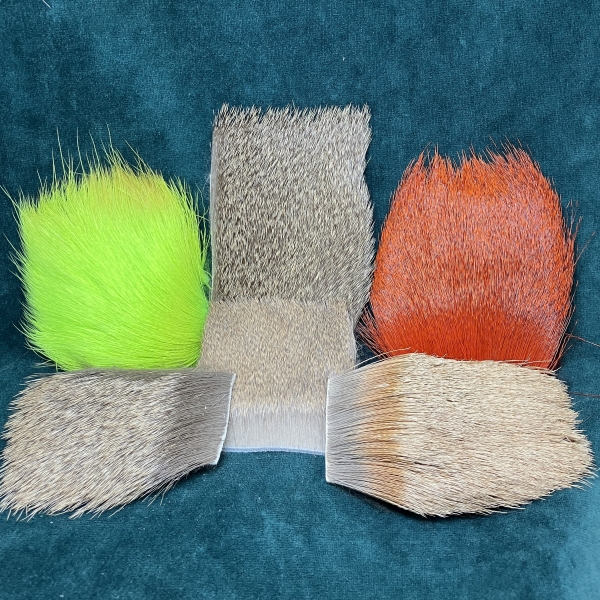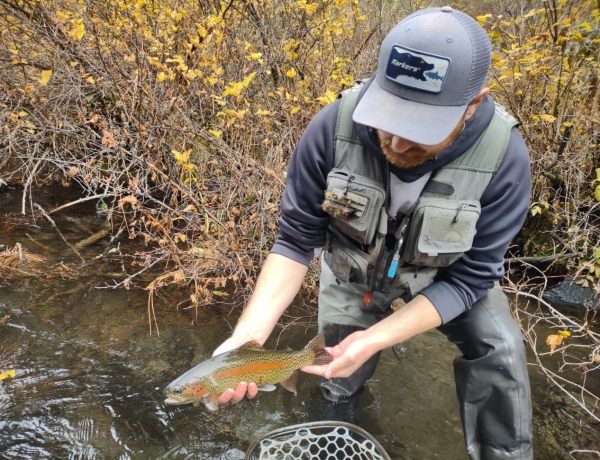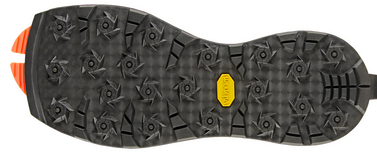Steelhead are an anadromous (meaning they are born in freshwater, rear in saltwater, and return to spawn in freshwater) form of rainbow trout that utilize the ocean for its abundance of food compared to freshwater environments. They can be targeted with nymphs and swung flies, and out here in our neck of the woods (Deschutes, John Day, etc.) people tend to use two-handed rods like spey or switch rods. A 7 weight size is most common. For a more in-depth look at two-hander setups, check out our post about it in this article titled "Setting Up Switch and Spey Rods".
Fishing for steelhead is different than trout in that steelhead do not pay attention to hatches in the same way that resident trout do. Even so, there are plenty of stories that float around of steelhead behaving like their freshwater bretheren. I've seen steelhead in the lower D feed on BWOs in February, coastal fish swipe at October caddis in the fall, and Lee Spencer even writes in his book (A Temporary Refuge) of steelhead eating leaves and moss while sitting in a pool. Unfortunately, these are not repeatable events that will help you catch fish consistently. They do eat things sometimes, and if you keep some hatchery fish you could find some bugs in their stomachs, but they generally don't metabolize stomach nutrients well once they enter freshwater. As downstream fish after spawning (known as kelts), they do eat and digest food more than when they are ascending the river, but very few steelhead survive to this point. Typically about 1-10% of the adults that make it til spawning will survive to go back to the ocean. Some situations where fish are artificially reconditioned the success rate can be slightly higher than 10% but it's certainly not a significant number of spawners either way. The fish in the Deschutes and anywhere else east of the Cascades are especially impressive in their ability to enter freshwater 9 to 10 months before they will actually spawn and swim upstream hundreds of miles without any significant nutrient intake. In contrast, coastal winter run fish can sometimes enter freshwater, spawn, and die or return to the salt in less than a month. This is all just a verbose roundabout way of saying that finding when and where they will be in the river is far more important than having the "right" fly. Flies for steelhead can range from beefed up versions of trout nymphs, to classic hairwing style flies such as a Mack's Canyon (created on the Deschutes), to bulkier intruder style flies that possibly remind steelhead of the squid they were so fond of eating in the ocean, and even flies that create a wake on the surface for a technique called "skating". For more information on fly selection, check out our article called "Steelhead Flies". By and large, the central Oregon steelhead game is centered around swinging flies. When swinging, this means covering every inch of the run you are fishing that you can, at the correct depth. Since fish are cold blooded, the colder the water is, the less they want to exert energy. In the summer, when water temperatures are around 60-65, you can fish floating lines or light sink tips. As the water cools, you'll have to get deeper to get closer to the fish since they aren't as willing to move in the water column anymore. The good news is that once you find a spot that holds a steelhead, that same spot will probably continue to hold fish every year. Once you get a few steelhead under your belt, you will begin to notice places that are "A" water, "B" water, "C" water, and so on. In high return years, fishing everywhere can be worthwhile because there are a lot more fish and by fishing lower quality water, you can target fish that may be less pressured. On low return years, you can skip the less productive water and maximize your opportunities by fishing only the most likely holding lies.
The biggest thing in steelhead fishing is to actually go. Having the opportunity to catch a fish is the most you can ask for, and the more time you spend on the water covering runs well, the more likely you are to catch fish. We can answer any additional questions you may have at the shop! The only thing that is certain is that no one ever caught a steelhead while watching football at home.


